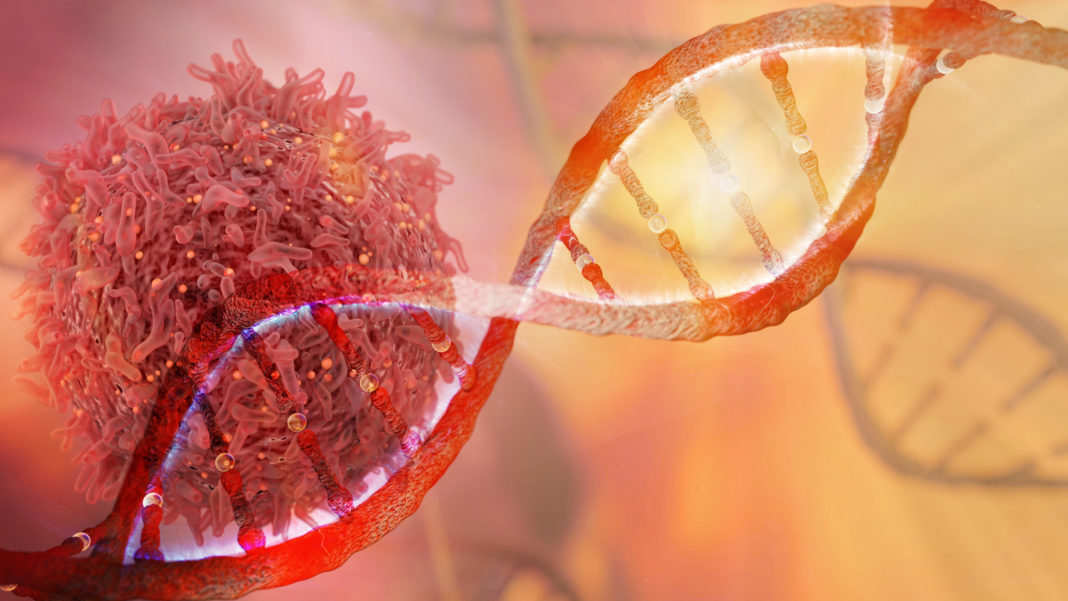Throughout the course of our lives, DNA can break in response to natural and environmental factors. However, our bodies have dedicated enzymes and pathways which can repair our broken DNA back together through several different mechanisms, known as DNA repair pathways. Some cancers, however, can hijack these pathways for their own benefit. Now, researchers at the UNC School of Medicine and the UNC Lineberger Comprehensive Cancer Center, have pieced together the lesser-known DNA repair pathway, called polymerase theta-mediated end joining (TMEJ). Their findings may lead to therapies for cancer.
Their study is published in Nature in an article titled, “Stepwise requirements for polymerases δ and θ in theta-mediated end joining.”
“Timely repair of chromosomal double-strand breaks is required for genome integrity and cellular viability,” the researchers wrote. “The polymerase theta-mediated end joining pathway has an important role in resolving these breaks and is essential in cancers defective in other DNA repair pathways, thus making it an emerging therapeutic target. It requires annealing of 2–6 nucleotides of complementary sequence, microhomologies, that are adjacent to the broken ends, followed by initiation of end-bridging DNA synthesis by polymerase θ. However, the other pathway steps remain inadequately defined, and the enzymes required for them are unknown. Here we demonstrate requirements for exonucleolytic digestion of unpaired 3′ tails before polymerase θ can initiate synthesis, then a switch to a more accurate, processive and strand-displacing polymerase to complete repair.”
“People with these breast cancer mutations, their cancers rely on polymerase theta’s repair pathway to keep the tumors alive and repair DNA damage in the cancerous tissue,” said Susanna Stroik, PhD, a postdoctoral researcher in the labs of Dale Ramsden, PhD, professor at UNC. “Now that we know more about this pathway, scientists could, in theory, produce a drug that could disrupt key pieces of the pathway in cancer cells, as opposed to using conventional chemotherapies that destroy healthy cells along with the cancer.”
TMEJ has been the most elusive DNA repair pathways. Richard Wood, PhD, a distinguished professor at University of Texas MD Anderson Cancer Center played a key role in the first characterization of polymerase theta in 2003.
With the help of these collaborators, Stroik was able to use a wide variety of experimental approaches to fill in the gaps in our understanding of the TMEJ pathway. She discovered that another polymerase, called polymerase delta, uses a buddy system with polymerase theta to assist it in this repair pathway.
Stroik’s research showed that polymerase theta is good at some things, but not others.
“It makes a lot of errors and it’s not capable of creating large swaths of DNA at once,” said Stroik. “What was so beautiful and kind of elegant about the whole discovery is that there are two different enzymes alternating between pathway steps and helping each other out.”
When a double-stranded break occurs, both strands of DNA are cut at the same spot, much like scissors severing a braid of hair. Polymerase theta acts quickly, grabbing the two single strands of DNA, matching up the closest base pairs to the break, and holding them together.
However, this often leaves some residual flaps of single stranded DNA at the ends. Polymerase delta jumps in to cut the extraneous flaps, giving polymerase theta enough room to start synthesizing new DNA to fill in gaps in the DNA strands. Finally, polymerase delta jumps in one last time to help polymerase theta complete synthesis.
Since many cancers make use of the TMEJ pathway to keep tumors alive, many researchers have investigated creating drugs that can interfere with the pathway. The new findings will contribute to ongoing basic studies in polymerases theta and delta, while also aiding new cancer drugs called polymerase theta inhibitors, which are currently in clinical trials.


